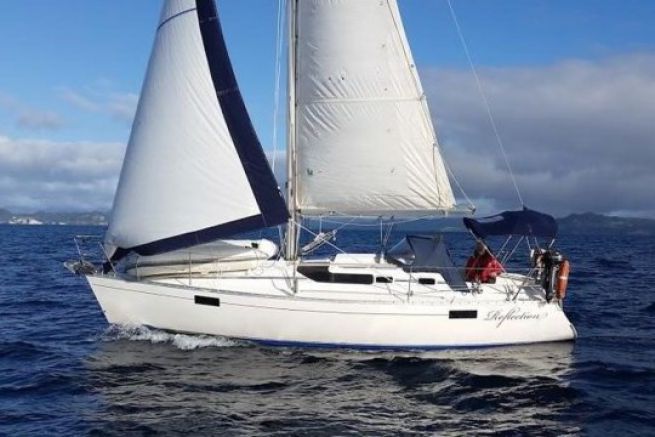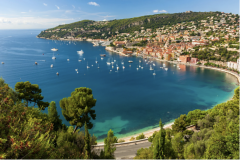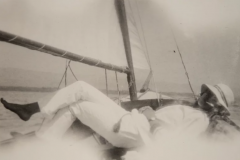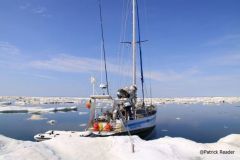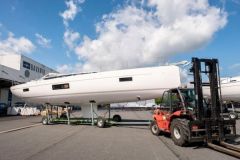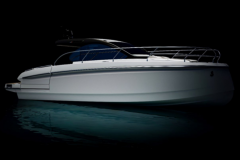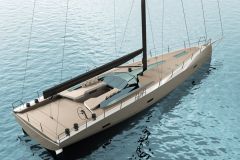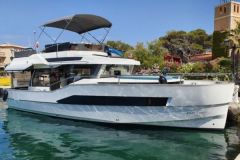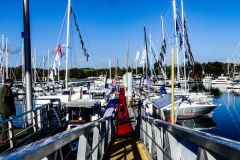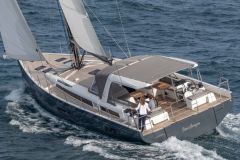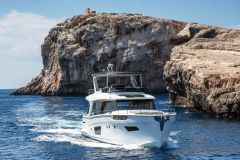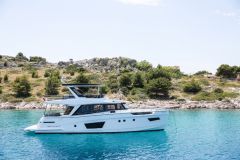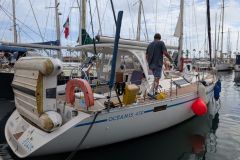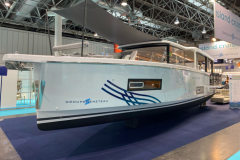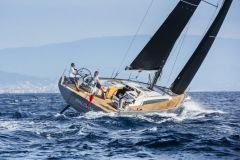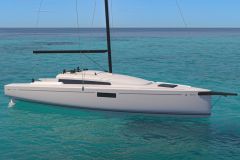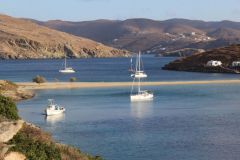- Price : from 22 000 euros
- 359 units built from 1987 to 1992
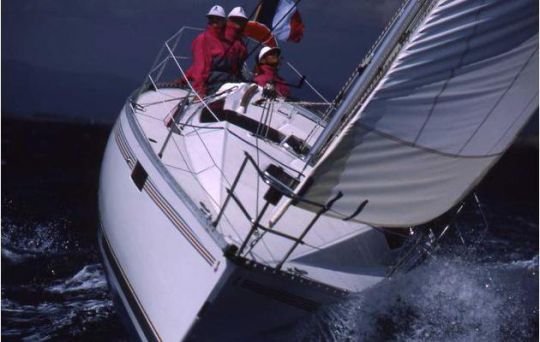
Launched at the end of the 1980s, the Océanis 320 was the smallest model in the range - which started with the 350 and then the 430. The hull designed by Philippe Briand is quite hollow with a bow brion flush with the surface; a beautiful design that optimizes the wetted surface while providing good volume (especially at the stern), so as to easily support a crew of four and all the equipment and personal belongings carried on board during cruising. Contrary to the trend in the 1970s, the builder did not try to fit as many berths as possible, this boat is well designed for four people.
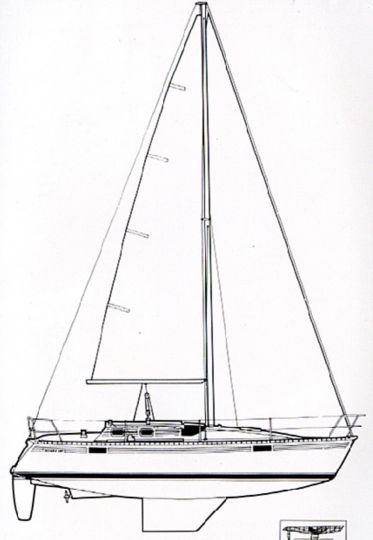
The sail plan is a classic head rig with a large genoa - 30 m2 against 18.50 for the mainsail.
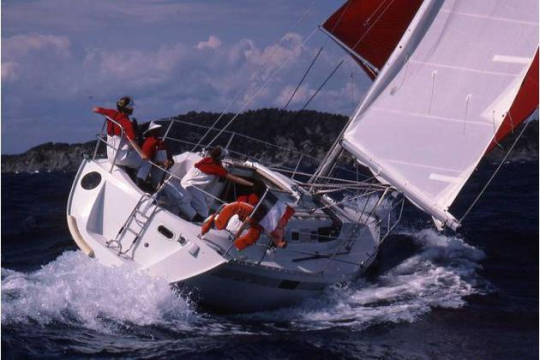
Not ridiculous under sail
Not too heavy and correctly covered, the Océanis 320 can do well in all wind conditions if you give it the means - not too much weight on board, clean hull, propeller with steerable blades and recent sails. It is not a racing boat but an honest cruiser, which goes upwind well with its deep keel - a little less well with the fin keel. But its limited ballast ratio forces to reduce the sail quite quickly - 15 to 20 knots of wind.
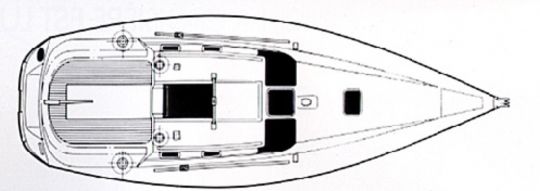
Tiller and back skirt
The Océanis 320 offers what all the previous generation of cruisers lacked: a real aft skirt! Admittedly, it is now quite narrow compared to what the most recent sailboats of this length offer, but the possibility to swim easily, to go down to the quay or to the tender brings a real plus when cruising. The cockpit is wide; the adoption of the classic tiller obviously allows a significant gain in space compared to a wheel. The access to the foredeck is quite frequent on clear gangways. The fittings are consistent with the program, but the mainsheet, pushed back in front of the companionway cover, is very far from the helmsman.
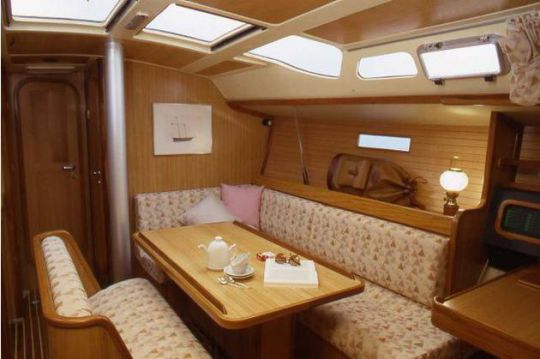
Successful moves
A saloon off the starboard side, facing a large American cabin: the living area is well laid out since it frees up a vast central passage. By lowering the table, you can enjoy an extra double berth. At both ends, two double cabins. The toilet is located near the companionway, as is the chart table, facing the road.
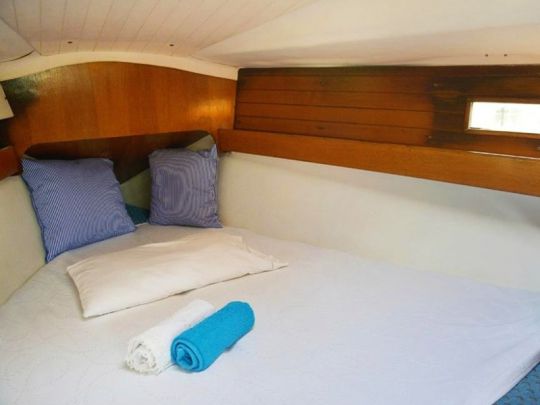
The diagnosis of Bateaux.com
This model is part of the first generation Océanis; rather well built yachts of which few owners have complained. 9.23 m hull length is a bit short to venture across the Atlantic... and yet many 320s have done it! The recurrent problem of this model is its zenithal portholes. First of all, it is essential to protect them in order to avoid transforming the square into an oven. And the plexi, overexposed to UV and heat, does not fail to deteriorate. Just like the seals, which leak quickly. Also worth checking: the genoa furler drum below deck exposes the sail to scratching from the anchor chain. Many 320s have adopted a classic above-deck furling system.
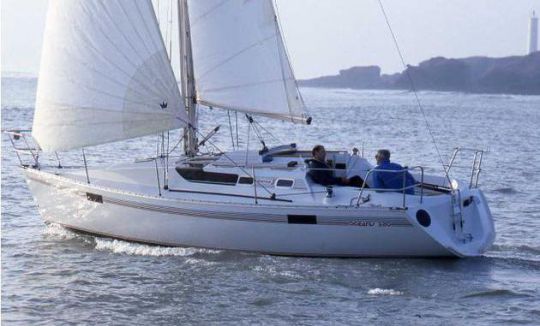
The advantages
- Good performance at all speeds - with the large draft
- Successful move-in plan
- General robustness
The disadvantages
- Fragile zenithal windows - they also promote the greenhouse effect
- Genoa too close to the anchor chain
- Mainsheet bar away from the helmsman
But what is missing?
The 320 fulfills its family cruiser program perfectly - all that remains is to deal with its small design flaws, which are not prohibitive. And to deal with a sail plan that favors the genoa..
The equivalent today?
The Sun Odyssey 319, the Hanse 315 or the Dufour 310 Grand Large offer greater waterline length - higher average speed and above all cockpits with a much more convincing access to the sea: many models, such as the Hanse and the Dufour, offer two wheelbars and therefore a well-cleared central passage.
